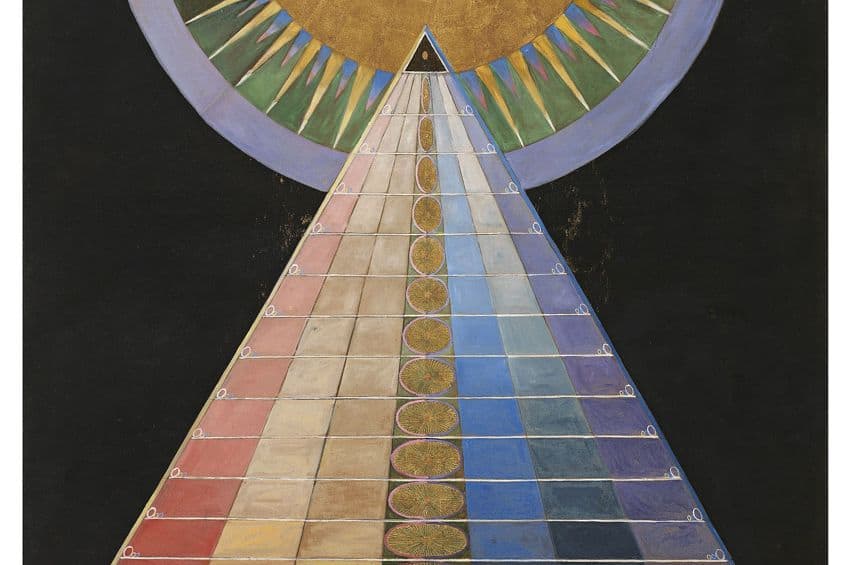Abstract Art – Trace the Movement Away from Realism
What is Abstract art, and who are the most famous abstract artists? Based on the Abstract art definition, the style employs a visual language comprising form, color, shape, and line to produce compositions that exist independently from the figurative imagery of the real world. Abstract paintings and Abstract drawings are more reflective of the artist’s inner world and personal interpretation of symbols than they are of the objects we observe in our daily lives. This article will explore the emergence of modern Abstract art, as well as the development of its various subgenres such as Geometric Abstract art.
Contents
What Is Abstract Art?
From the Renaissance period right up to the mid-19th century, Western art had largely been preoccupied with its attempts to replicate the real world as accurately as possible. However, due to the significant developments in science, philosophy, and technology, artists soon felt the need to embody these new discoveries in their artworks towards the end of the 19th century. These artists drew their ideas from a diverse range of sources and were reflective of the intellectual and social concerns of the times.
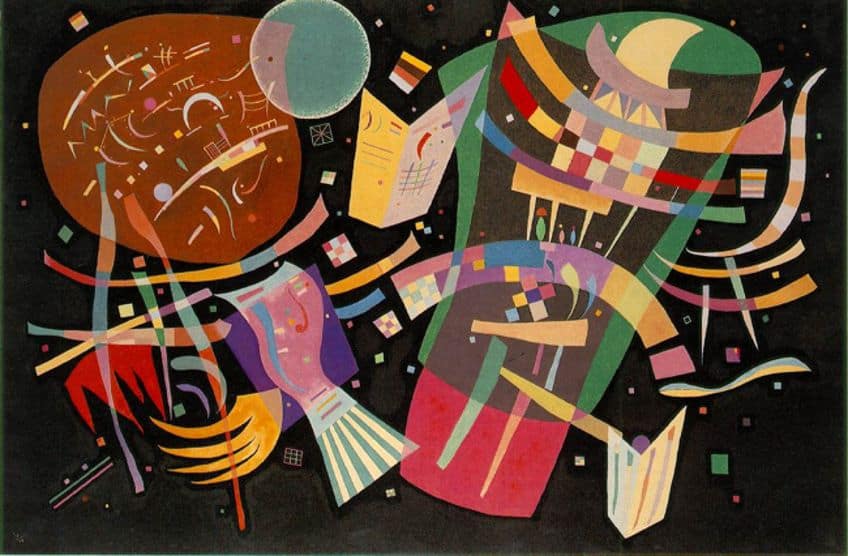
While all closely related, Modern Abstract art, non-objective art, non-figurative art, and non-representational art, are not identical in meaning. Famous Abstract artists strove to break away from the accurate portrayal of objects, in a manner that varied from slight departures from figurative representation, to completely abstracted works that do not represent any known forms in this world. Since it is practically impossible to perfectly represent the real world, all art, to some degree, is an abstraction.
For example, some artists might choose to depict landscapes or portraits, but alter the color palette in an unnatural way to enhance the mood and feeling of the piece, such as can be seen in Fauvism artworks.
Another example is cubism, which while highly abstracted, is still a partial representation of something from the real world. However, complete abstraction requires that the shapes within the work cannot be identified as objects. For instance, in Geometric Abstract art, you are likely to find things that can be found in nature.
The History of Abstract Art
Many ancient cultures incorporated markings and signs in the designs of ceramics and pottery, using basic linear and geometric forms which could have possibly served as decoration or symbols. This can be viewed as a very early example of abstraction, and a degree of visual interpretation embodied in modern Abstract artworks. Examples of abstracted artworks can be found as far back as classical antiquity.
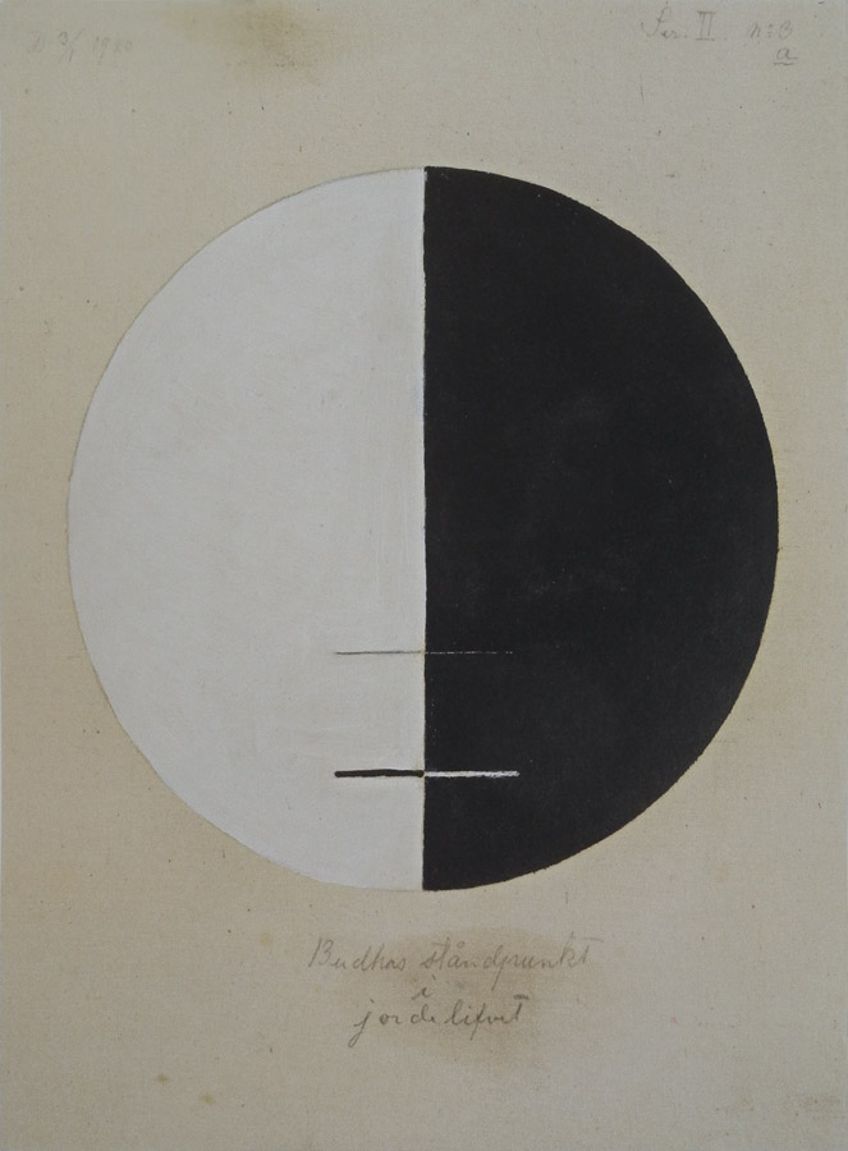
Islamic Art
Islamic art has always steered clear of representational art, as it was believed that only the highest being was solely responsible for the act of creating the forms of animals and humans. This resulted in the proliferation of non-representational art forms and styles in the world of Islamic art. This type of art can be found as far back as the initial emergence of Islam itself, with early examples observable in structures such as the Dome of the Rock.
There was a considerable disdain for figurative depictions of animals and humans, however, inanimate objects and plants were deemed acceptable subject matter.
Traditionally, the art of Islam comprises tessellated geometric patterns, calligraphy, and arabesques (a kind of vegetable motif). These can be seen in Islamic art forms such as pottery, metalwork, glassmaking, architecture, and rug-making, as well as along the borders of figurative works. During the Crusades, there was much cultural exchange between the Islamic and Christian worlds, and certain techniques and patterns would eventually be incorporated in European decorative artworks, most notably in Spain and Italy.

East-Asian Art
Credited with inventing the splashed-ink style of painting, the Tang Dynasty artist Wang Mo was the first noted artist who utilized abstraction techniques in his works. Although none of Mo’s original world still exists, his impact can be seen in subsequent works produced during the Song Dynasty. Liang Kai, a Chan Buddhist artist, incorporated this technique into his works in which he chose to sacrifice a realistic depiction of the world around him in favor of a spontaneous style that was connected to the non-rationalistic mindset of those considered to be enlightened.
Many later Zen painters would be influenced by the splash-ink landscape artworks of Yu Jian, a Tiantai Buddhist.
His works depict simplified mountains clouded in thick mist, with hardly any discernible features. Another notable example of abstract painting in Chinese art is Cosmic Circle (1349) by Zhu Derun. The artwork features a tree planted in very rocky soil on the left, with vines and branches that extend toward the right side of the picture, which depicts a circle floating in a void. This was meant to symbolize the concepts of Daoist metaphysics where reality and chaos are co-existing stages of nature’s cycles. Enso’s are perfect circles created with one or two swift brushstrokes. Serving as a symbol of a state when the mind is released so that the body may create, it was created by Zen Buddhist monks in Tokugawa, Japan.
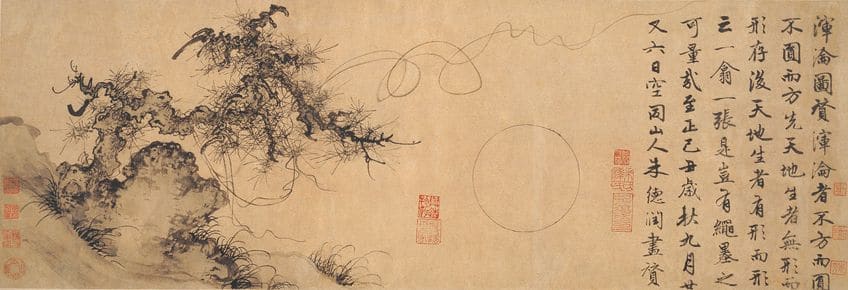
19th-Century Art
For many years, art was largely funded by the Church, and therefore, most of the subject matter in art was centered around religion. As patronage from the Church began to diminish, public patronage from individuals became more prominent, eventually allowing artists to make a living without financial support from the clergy. Impressionism, Expressionism, and Romanticism were influential in the early development of Abstract art. During this period, artists began to experience artistic freedom of expression in their works.
Nocturne in Black and Gold: The falling Rocket (1872) by James McNeill Whistler was one of the first works of this period to place more emphasis on the sensations that were produced rather than the accurate portrayal of objects.
At a time when abstraction was not yet even a concept, Georgiana Houghton was producing works featuring abstract shapes which she called her “spirit” drawings. Producing works of intense colors, exaggerated features, and visual distortions, the Expressionists sought to explore a very bold use of paint surface. In reaction to the Impressionists and the other 19th-century conservative art forms, the Expressionists sought to produce works that were charged with emotion. Rather than focus on the subject matter, they wanted to portray the various psychological states of the human experience. While painters such as James Ensor and Edvard Munch largely drew their influences from the post-Impressionists, they are still regarded as significantly instrumental in the emergence of 20th-century modern Abstract art.
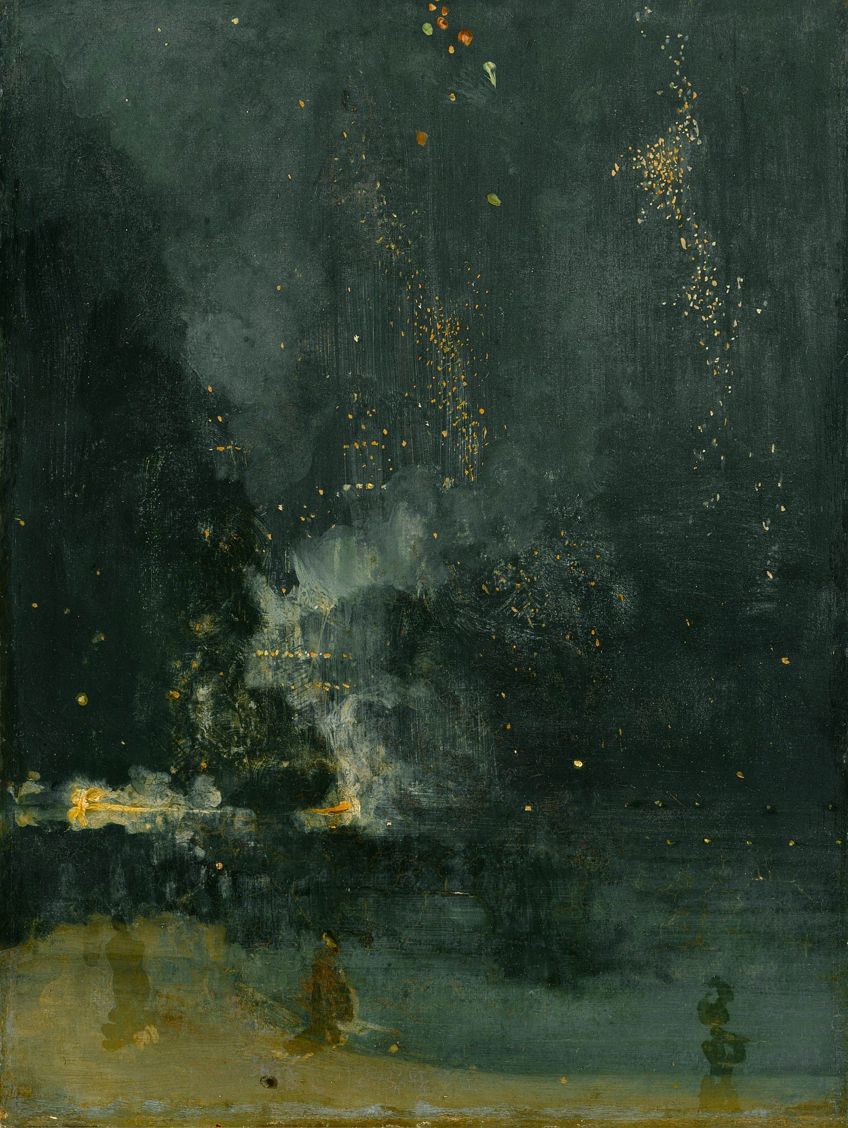
Paul Cézanne started as a member of the Impressionist movement, however, he developed a style in which reality was viewed from a single point of view, which later formed the basis of a subsequent movement – Cubism. Geometric Abstract artists such as Wassily Kandinsky and Hilma Af Lint would later be influenced by the religious and mystical philosophies of Madame Blavatsky in the late 19th century. In the early years of the 20th century, Geometric Abstract artists such as Piet Mondrian were influenced by the mystical teachings of P. D. Ouspensky and Georges Gurdjieff. František Kupka and Kazimir Malevich’s works were also influenced by this new spiritualism.
Early 20th-Century Art
Henri Matisse, as well as many other artists such as André Derain, Georges Braque, Raoul Dufy, and Jean Metzinger, began to create works in the style known as Fauvism, which featured expressive figurative and landscape paintings with wild multi-colored palettes. Wassily Kandinsky, another notable figure in the development of abstraction, was heavily influenced by the Fauvists raw color language.
Cézanne’s notion that everything found in nature could be reduced to a cone, sphere, and cube, as well as the ideas of the Fauvists, became the basis on which early 20th-century Abstract art was built.
Early Abstract Art
Guillaume, the renowned poet, coined the term “Orphism” to describe the works of several artists who had exhibited works at the Salon de la Section d’Or in 1912. He defined it as pure art where the artists produced structures out of elements that had not been referenced from the visual world, but rather produced entirely by the imagination of the artist himself. Artists began to form cultural connections across European cities from the turn of the century onward, striving to produce a form of art that would reach the aspirations of modernism. A basis of diverse forms of abstraction began to emerge as discussions and experimentation began to emerge as a result of the manifestos, books, and exhibitions shared between artists from different cities.

A number of artists had begun to create works that embodied this new pure art form, from 1909 to 1913. Featuring his imaginative and free drawing style and expressive color application, Henri Matisse came close to producing a work of pure abstraction in The Yellow Curtain (1915). Rayist artists such as Mikhail Larionov and Natalia Goncharova utilized light rays to create their pieces and Black Square (1915) by Kasimir Malevich was the first completely abstract painting created by the artist. Between 1915 and 1919, Piet Mondrian further developed his own abstract visual language, comprising vertical and horizontal lines with color rectangles of color.
Called Neo-Plasticism, many artists in the De Stijl group hoped to use it to reshape the way art was created and experienced.
Russian Avant-Garde Art
Feeling that art was not something that existed outside of life, but rather life itself, several famous Abstract artists in Russia became adherents of the Constructivism movement. Using the materials and tools of modern production methods, artists became technicians. Artists such as Alexandre Exter and Varvara Stepanova abandoned painting on canvas altogether and instead focused their creativity on graphic works and theater design. Artists such as Anton Pevsner, Naum Gabo, and Kazimir Malevich were on the other side of the fence, arguing that art was not for organizing life in the materialistic and utilitarian sense, but rather a spiritual endeavor.
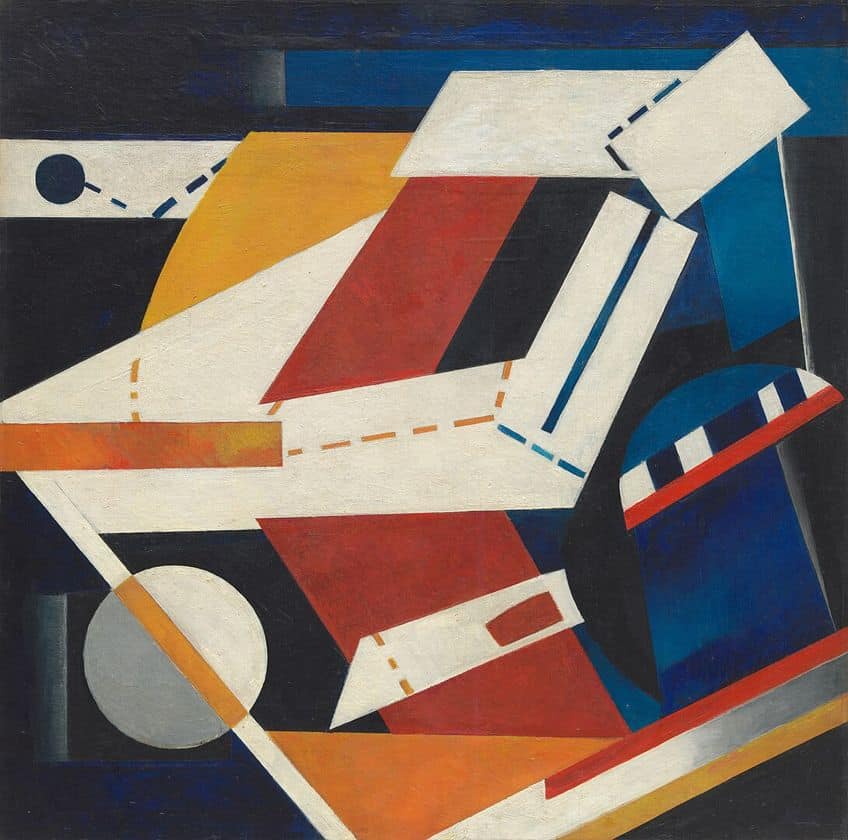
Much collaboration took place between the Avant-Garde artists from Russia and the other Constructivist artists from across Eastern Europe, such as Katarzyna Kobro, Władysław Strzemiński, and Henryk Stażewski. Many of the artists who were opposed to the idea of materialist production ended up leaving Russia. Kandinsky began his studies in Moscow and then relocated to the Bauhaus, Anton Pevsner relocated to France, and Gabo eventually ended up in the States. The revolutionary era had come to an end by the middle of the 1920s, and so did the artistic freedoms that artists had enjoyed up to that point.
Only Socialist Realism artworks were permitted by the 1930s.
Music and Abstract Art
As the visual arts grew progressively more abstract, they started to develop some of the same characteristics found in music, another form of art which utilized abstract elements. An artist as well as an amateur musician, Wassily Kandinsky was influenced by the possibility that colors and shapes could resound in the soul in the same way that music does.

Charles Baudelaire proposed the idea that our senses are influenced by, and respond to, a range of stimuli, and that at a deeper aesthetic level, these senses are connected. This was also connected to the idea that a spiritual plane could be reached by using art as a method of transcending our everyday realities. All these various influences resulted in a search for achieving an objectless state by artists such as Kandinsky, Mondrian, and Hilma Af Klint, who viewed the occult as the means by which they could create the “inner” object.
Similar to color, the universal forms of shapes such as the triangle, square, and circle, became the spatial elements, as they were both viewed as fundamental mechanisms underlying the reality visible to us.
The Bauhaus Influence
Walter Gropius established the Bauhaus in Germany, in 1919. The Bauhaus teaching program’s philosophy was based on the unification of all plastic and visual arts, from painting and architecture to stained glass and weaving. This concept arose from the principles of the Arts and Crafts movement in Germany and England. Wassily Kandinsky, Paul Klee, Josef Albers, Johannes Itten, and Anni Albers were among the instructors. The school was relocated to Dessau in 1925. The Bauhaus was then shut down in 1932 when the Nazi party took power in Germany. Then a mass exodus followed, not only from the Bauhaus school but from Europe as a whole, as artists and other creatives moved to London, the United States, and Paris. While many Bauhaus artists emigrated to the United States, Paul Klee moved to Switzerland.

Abstraction in London and Paris
Artists from Germany, Russia, the Netherlands, and other European regions affected by the development of totalitarianism moved to Paris throughout the 1930s. Geometric and organic forms were used by Jean Arp and Sophie Tauber in their collaborative sculptures and paintings. Katarzyna Kobro, a Polish artist, used mathematical concepts in her artwork. Artists sought to analyze the many theoretical and aesthetic categories as a result of the numerous forms of abstraction existing in close proximity.
Joaquin Torres-Garca coordinated an exhibit of 46 members of the Cercle et Carré group that included works by the Neo-Plasticists as well as famous Abstract artists such as Anton Pevsner, Kandinsky, and Kurt Schwitters.
Theo van Doesburg critiqued the collection for being too undefined, so he launched the magazine Art Concret with a manifesto outlining abstract art in which the color, line, and surface are the only distinct realities. As the political climate intensified in 1935, and artists reassembled, Abstraction-Création, created in 1931 as a more open movement, offered a reference point for abstract artists. In 1935, the first show of British abstract art was held in England, and Nicolete Gray coordinated the more international Abstract and Concrete show the next year, which included works by Joan Miró, Piet Mondrian, Ben Nicholson, and Barbara Hepworth. Nicholson, Hepworth, and Gabo relocated to Cornwall’s St. Ives group to resume their Constructivist works.
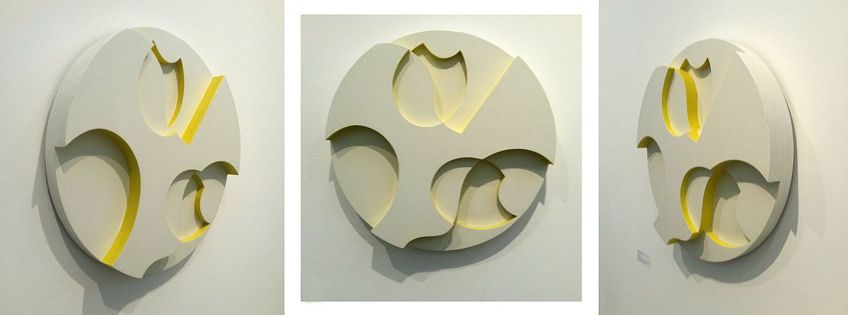
Late 20th-Century Art
Many artists left the United States and Europe when the Nazis started to gain power in the 1930s. By the early 1940s, New York successfully represented major movements such as Expressionism, Abstraction, Cubism, Surrealism, Dada, and Modern art. Among the exiled Europeans who traveled to New York were Fernand Léger, Marcel Duchamp, Piet Mondrian, André Masson, Jacques Lipchitz, Max Ernst, and André Breton. Local New York artists absorbed and expanded on the broad cultural influences offered by the Europeans. All of these elements thrived in New York because of the atmosphere of freedom they experienced.
Art galleries that had previously concentrated only on European artists started to take note of the local art scene and the output of emerging American painters.
Many artists’ mature works at this time grew distinctively abstract. Piet Mondrian’s artwork Composition No. 10 (1942), defined by its use of primary colors, white background, and black lines, clearly exhibited his radical yet traditional attitude toward the rectangle and abstract artwork as a whole. Some painters of the time eluded categorization, such as Georgia O’Keeffe, who, although a modernist abstractionist, was a true rebel in that she created exceedingly abstract shapes without conforming to any one group of the time. American painters working in a variety of styles gradually started to unify into distinct artistic groupings. The New York School and the Abstract Expressionists were the most well-known groups of American artists.
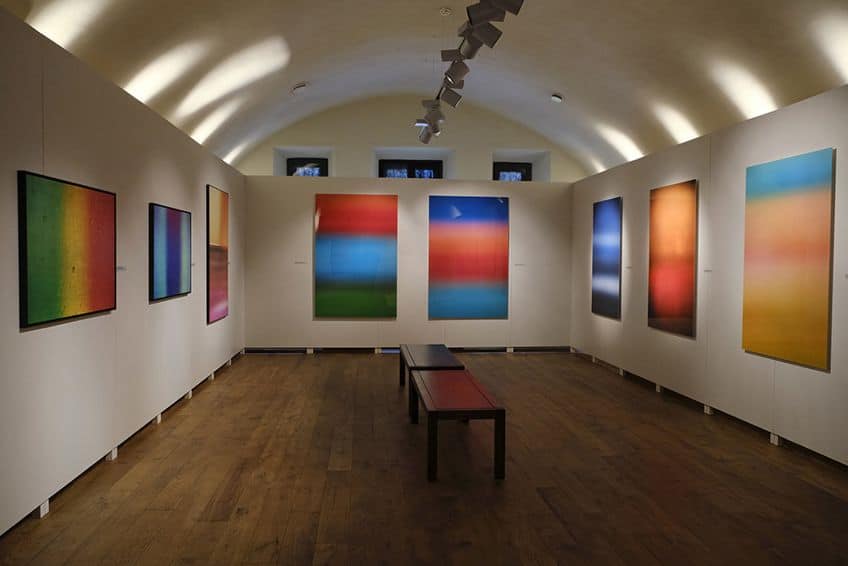
There was a culture in New York City that promoted discourse, and there were new opportunities for growing and learning. Artists and academics Hans Hofmann and John D. Graham served as key bridge figures between recently arrived Modernists from Europe and young emerging American artists. Mark Rothko, who was born in Russia, started with surrealist themes that evolved into his stunning color compositions of the early 1950s. The expressionistic gesture, as well as the process of painting itself, became central to the works of Robert Motherwell, Jackson Pollock, and Franz Kline, whereas the figurative works of Willem de Kooning and Arshile Gorky developed into abstractions by the end of the 1940s. New York City became the epicenter, and artists from all over the world gathered there, as well as from other parts of the States.
21st Century
Geometric abstraction, hard-edge painting, lyrical abstraction, minimalism, op art, color field painting, abstract expressionism, monochrome painting, Neo-Dada, and assemblage are just a few of the abstract approaches that emerged in the last half of the 20th century. In America, Art as Object, as demonstrated by Frank Stella’s paintings and Donald Judd’s Minimalist sculptures, is considered a newer variation.
Lyrical Abstraction and the sensual use of colors in the works of artists as diversified as Patrick Heron, Robert Motherwell, Sam Francis, Kenneth Noland, Cy Twombly, Helen Frankenthaler, and Joan Mitchell are further examples.
Analysis of Abstract Art History
One socio-historical reason for the increasing prominence of abstract concepts in modern art is that it is a reaction to and expression of the rising abstraction of social connections in industrialized civilization. Similarly, some view modern abstract art as a result of money’s abstract value, treating all things completely as exchange values. The social substance of Modern Abstract art is therefore precisely the abstract aspect of social reality in late modernity – bureaucratic impersonalization, legal formalities, and information. Post-Jungians, on the other hand, would consider quantum theories as driving the separation of the tangible and the conceptual in modern art, with its dissolution of conventional concepts of substance and form.
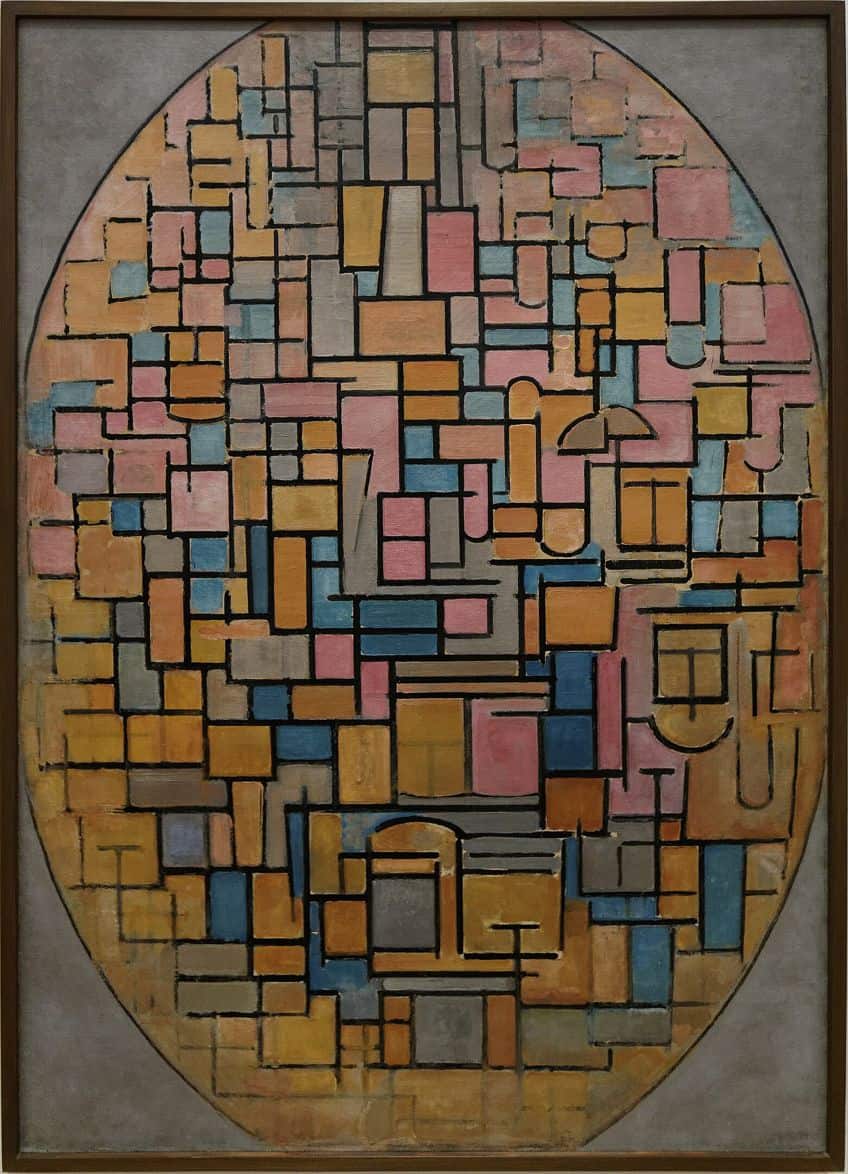
Famous Abstract Artworks
Modern Abstract art is an extremely adaptable genre that has allowed for its considerable development, and it can today be classified in hundreds of various ways while still being abstract art. From the fast rise of Abstraction-Création, a group established to counter the impact of Surrealists, to famous abstract artists who continue to work within the genre at present, it is evident that this genre will endure for many years to come.
The appeal of abstraction has also entered contemporary art, and it still holds a strong market presence in auction houses and commercial galleries today.
Altarpiece nº1-3 (1915) by Hilma Af Klint
| Artist | Hilma Af Klint (1862 – 1944) |
| Date Completed | 1915 |
| Medium | Oil on canvas |
| Dimensions (cm) | 185 x 152 |
| Location | Guggenheim Museum, New York City, United States |
Hilma Af Klint, who was born in Sweden, never dared to present her artwork to her peers and even demanded that it be kept hidden for at least two decades after her passing. As a consequence, she was not renowned as a famous abstract artist at the time, but she certainly is now, with many recognizing her as a pioneer among peers like Wassily Kandinsky.

During her career as an artist, Af Klint created around 1200 works as well as 150 notebooks containing her thoughts and research on the spiritual and philosophical concepts of abstraction. These artworks are basically schematics and abstractions from her concepts, expressing her interpretation of an unseen universe and its hidden energies, which she has consistently incorporated into her art.
Her long-overdue exhibition at the Guggenheim Museum in New York, which ran from 2018 until 2019, featured this series as well as her collection of work from 1906 until 1920.
Convergence (1952) by Jackson Pollock
| Artist | Jackson Pollock (1912 – 1956) |
| Date Completed | 1952 |
| Medium | Oil on canvas |
| Dimensions (cm) | 237 x 390 |
| Location | Buffalo AKG Art Museum, Buffalo, United States |
Jackson Pollock created an incredible 363 artworks in the 44 years he was alive. He is famed for his drip methods, and many of the dynamic artworks he created have left their impact on the art world.
Due to its representation of freedom of speech and expression, Convergence symbolizes a crucial and innovative breakthrough in the history of art. Pollock used this artwork to communicate his views about the dangers of Communism and the cold war. It has been defined as “everything that America stands for all bound up in a chaotic yet profound package”. A jigsaw puzzle business produced the artwork as a 340-piece puzzle in 1964, advertising it as the most challenging puzzle in the world.
Thousands of Americans bought it, demonstrating Pollock’s influence on the country.
Mountains and Sea (1952) by Helen Frankenthaler
| Artist | Helen Frankenthaler (1928 – 2011) |
| Date Completed | 1952 |
| Medium | Oil and charcoal on canvas |
| Dimensions (cm) | 220 x 297 |
| Location | National Gallery of Art, Washington, D.C., United States |
Mountains and Sea by Helen Frankenthaler is at the intersection of Color-field painting and Abstract Expressionism. Frankenthaler was renowned for her soak-stain process, and this was the first artwork she produced using it.
Frankenthaler used this technique by thinning her paints with kerosene or turpentine, and the resultant fluid was absorbed through the unprimed canvas. This stain would produce a radiance that gave her creations the appearance of being in constant motion. After seeing Jackson Pollock’s black-and-white works at a New York Gallery, Frankenthaler’s technique became more unrestrained. Her abstract artworks, fluctuating and almost ethereal in appearance, present illusionary impressions to viewers.
Her airy and flowing work stood in stark contrast to the usual heavy impasto methods of the era, and she influenced many painters around her.
Leda and the Swan (1962) by Cy Twombly
| Artist | Cy Twombly (1928 – 2011) |
| Date Completed | 1962 |
| Medium | Oil paint, crayon, and pencil |
| Dimensions (cm) | 190 x 200 |
| Location | Christie’s Auction House, United Kingdom |
Leda and the Swan, unseen by the public for more than three decades, was the most anticipated artwork of 2017 and was bought for just over $52 million. Cy Twombly painted works related to Roman mythology when he was in Rome, having been deeply influenced by the artworks depicting the events of classical antiquity.
The title refers to the Roman tale in which Jupiter, turned into a swan, seeks to seduce Leda, who would eventually birth Helen of Troy. Rather than showing the traditional female figure intertwined with a swan, as painters such as Michelangelo and Da Vinci traditionally had done, Twombly equipped himself with a variety of mixed media, thrashing around his canvas.
Twombly suggests the essence of Jupiter instead of depicting it in this piece, bringing his technique to the canvas to create this completely engrossing artwork.
Abstract Painting 599 (1986) by Gerhard Richter
| Artist | Gerhard Richter (1932 – Present) |
| Date Completed | 1986 |
| Medium | Oil on canvas |
| Dimensions (cm) | 300 x 250 |
| Location | Private collection |
Gerhard Richter is a versatile artist who has created photorealistic artworks, photography, and glass pieces in addition to abstract art. His artworks have established multiple auction records, and he is recognized as one of the most prominent modern German artists of our era. In the late 1970s, he began making abstract paintings, which he described as “fictive models since they make accessible a reality that we cannot see or explain, but whose presence we may imagine”.
While he created several of these works over his career, this one stands out because it is one of Richter’s favorites. It was subsequently sold for $46 million to an unidentified bidder in 2015, making it his most expensive artwork sold to date.
As we have discovered, aspects of abstraction can be found all the way back in classical antiquity. Through the centuries, it has reemerged in one form or another, but it was not until the early 20th century that it really began to solidify into its own movement. Steering away from the highly disciplined figurative works of the Renaissance and onwards, artists wanted to express something beyond the mere replication of what they observed in the world around them.
Frequently Asked Questions
What Is Abstract Art?
Most traditional art styles strove to re-create the objects and places that artists experienced in their daily lives. However, Abstract art is about producing images using the basic building blocks of art – line, form, color, and shape – and reorganizing them into unique compositions that bear no resemblance to the things of this world. This allowed artists to express something deeper that could not be expressed through mere replication.
What Is the Abstract Art Definition?
In comparison to landscapes or detailed recreations of historic events and icons, abstract art concentrates on the work’s pure visual qualities, letting colors and forms speak for themselves about what the artwork conveys. It is an art form that focuses more on the artist’s inner world than the real outer world. Abstract drawings can be found as far back as classical antiquity.
Jordan Anthony is a Cape Town-based film photographer, curator, and arts writer. She holds a Bachelor of Art in Fine Arts from the University of the Witwatersrand, Johannesburg, where she explored themes like healing, identity, dreams, and intuitive creation in her Contemporary art practice. Jordan has collaborated with various local art institutions, including the KZNSA Gallery in Durban, the Turbine Art Fair, and the Wits Art Museum. Her photography focuses on abstract color manipulations, portraiture, candid shots, and urban landscapes. She’s intrigued by philosophy, memory, and esotericism, drawing inspiration from Surrealism, Fluxus, and ancient civilizations, as well as childhood influences and found objects. Jordan is working for artfilemagazine since 2022 and writes blog posts about art history and photography.
Learn more about Jordan Anthony and about us.
Cite this Article
Jordan, Anthony, “Abstract Art – Trace the Movement Away from Realism.” artfilemagazine – Your Online Art Source. October 17, 2023. URL: https://artfilemagazine.com/abstract-art/
Anthony, J. (2023, 17 October). Abstract Art – Trace the Movement Away from Realism. artfilemagazine – Your Online Art Source. https://artfilemagazine.com/abstract-art/
Anthony, Jordan. “Abstract Art – Trace the Movement Away from Realism.” artfilemagazine – Your Online Art Source, October 17, 2023. https://artfilemagazine.com/abstract-art/.


